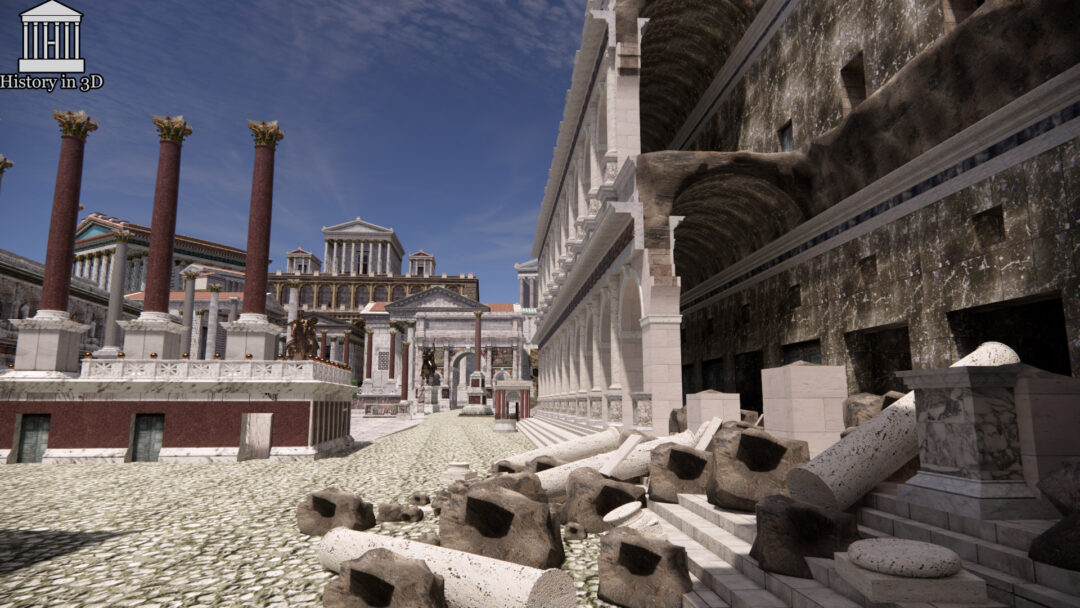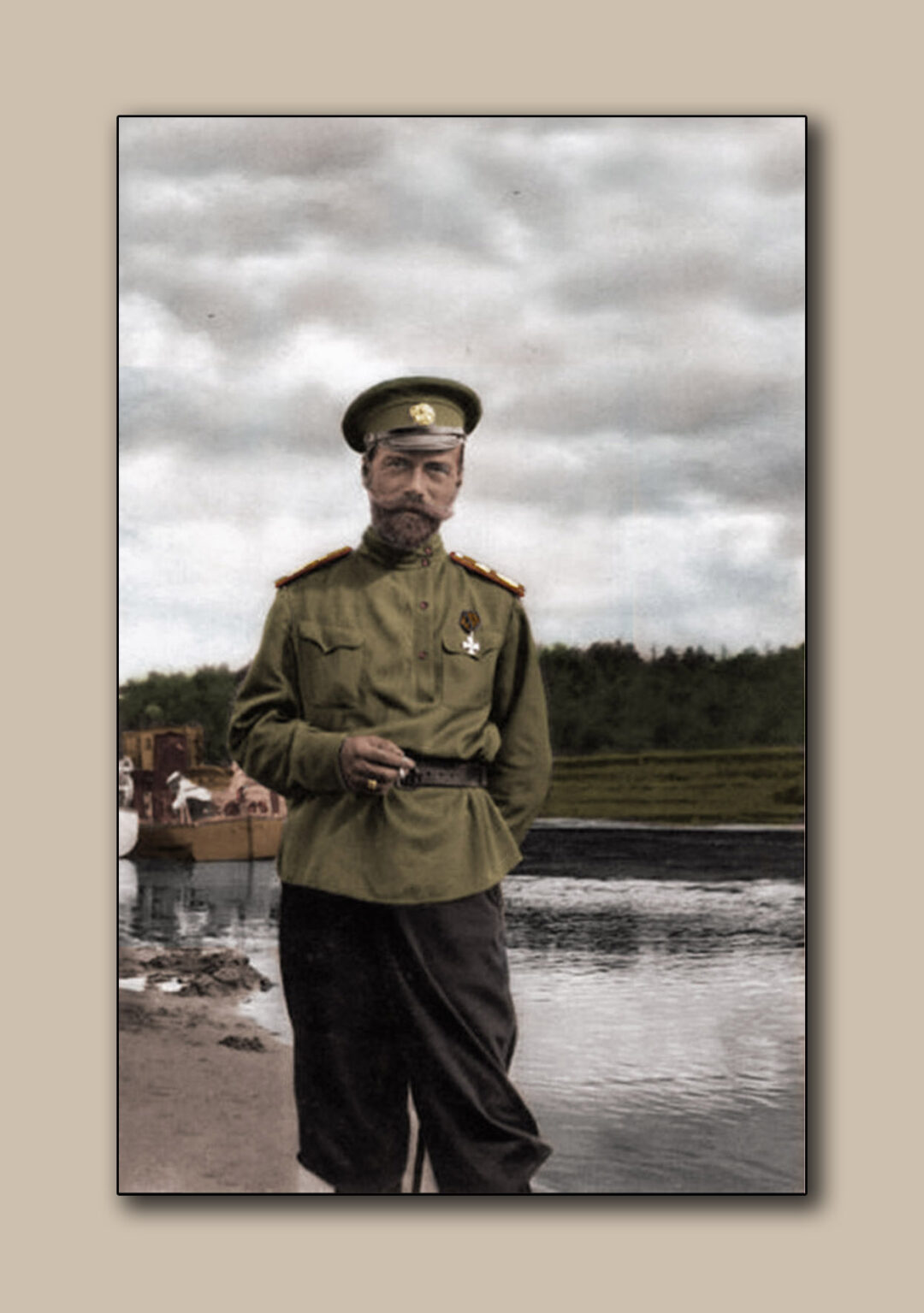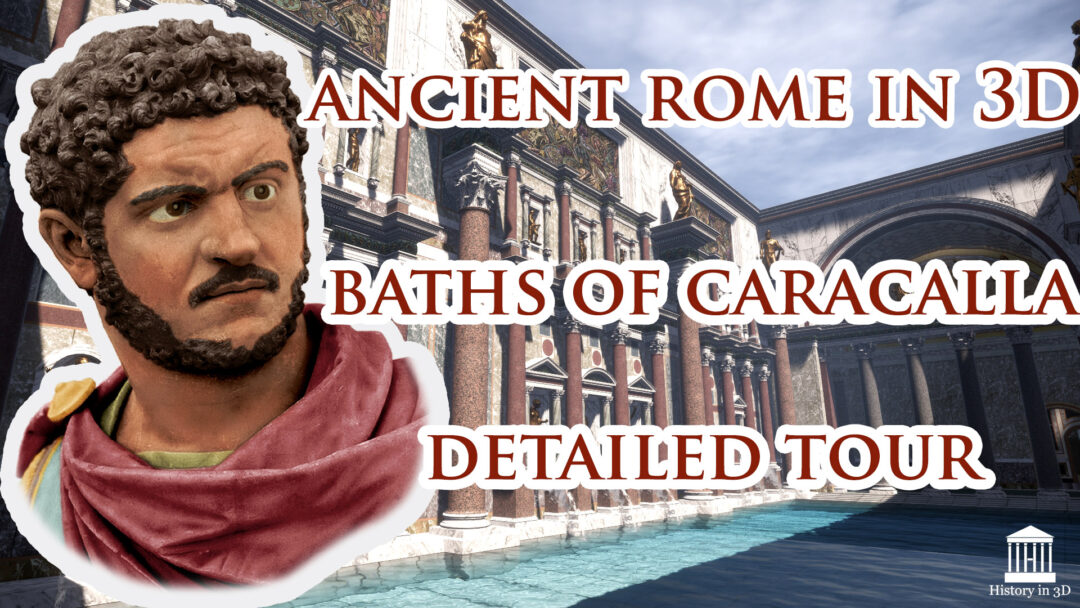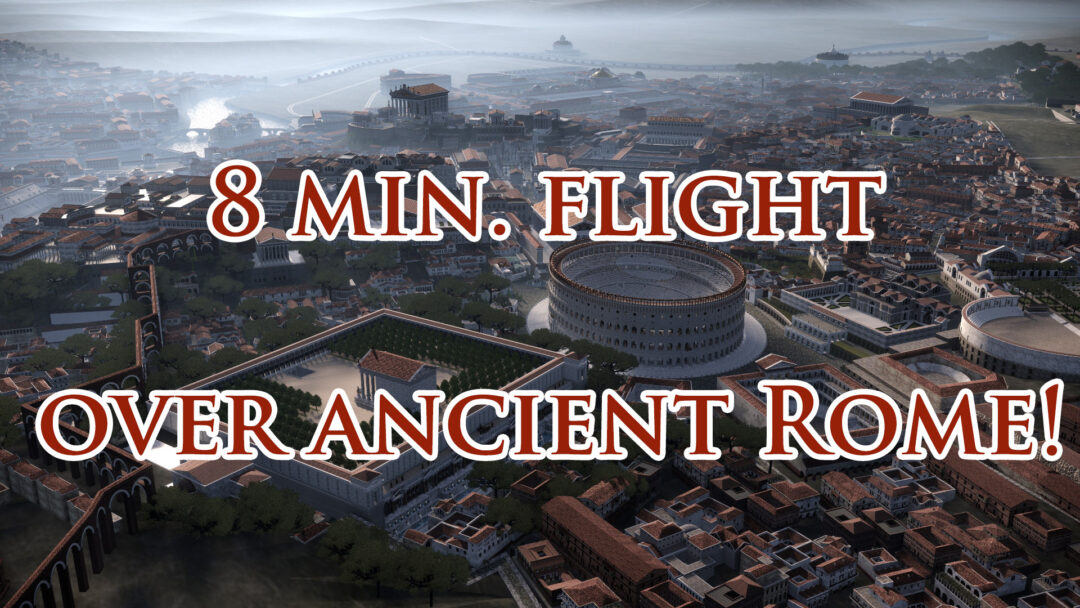Hi! As I mentioned in the prevous time, we’ve made the completely new 3D reconstruction of the famous Circus Maximus in Rome, and I’m glad to present a video tour for it, which is available on Youtube:
Here you can as well read the text edition and enjoy a number of images of the 3D reconstruction.
Circus Maximus was the oldest and largest of the theaters for games in Rome. According with the tradition, it was founded by Romulus in the Vallis Murcia between the Palatine an Aventine.
The Circus existed and functioned continuously for more than a thousand years, until the very end of ancient Rome and even for some time after. It has been rebuilt several times. We will show as it could look like in the 4th century CE, at the peak of its heyday.
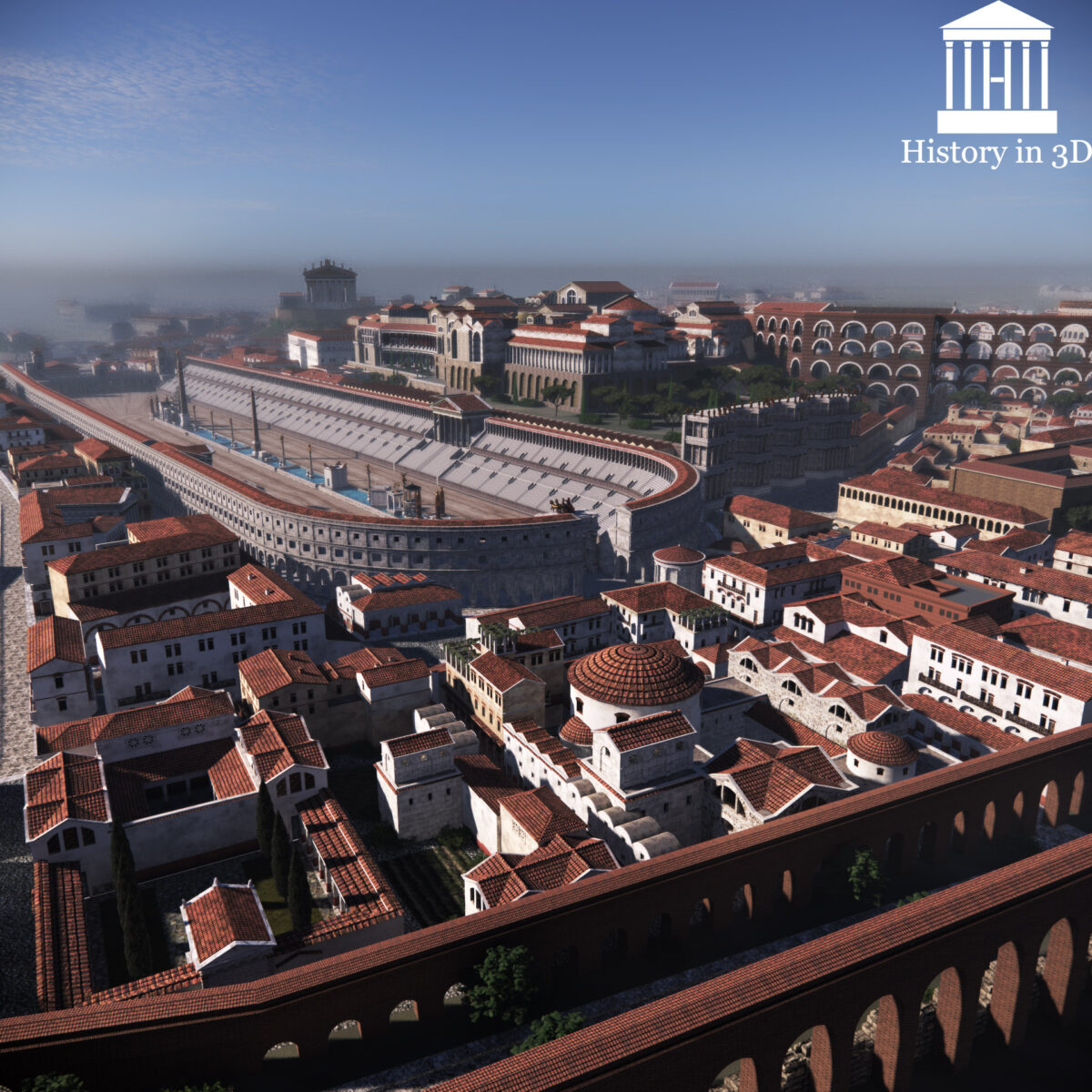
The games presented in the Circus were especially chariot races of quadrigas, but other sorts of races were also popular, sometimes included battles and hunts as well. The most important games were the Ludi Romani in September, and Ludi Plebei in November, but probably all the great games had at least a day or two of co called ‘ludi circenses’, as did victory celebrations and games given for dedication of buildings.
From the eastern side there was an arched entrance to the Circus, probably the passage used by triumphal procession on their way to the Forum. This was rebuilt between 80 and 91 CE by the Senate as a triumphal arch of three passages commemorating the conquest of Palestine by Vespasian and Titus.
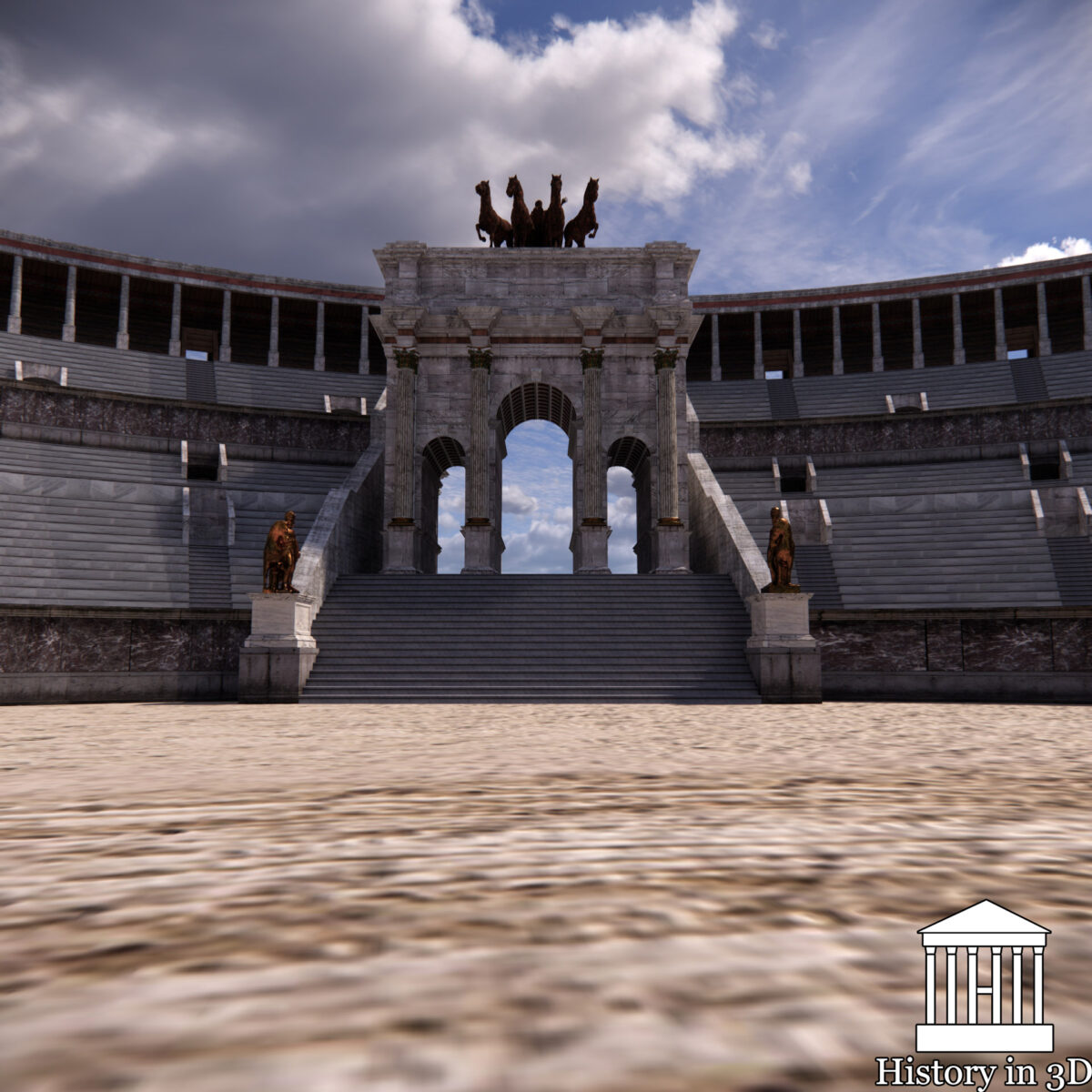
The Circus was 600 m long, 150 m wide, and with arena 550 m long and 80 m wide.
The average depth of cavea (seats) was 35 m. It was divided into three zones, the upper seats were of wood.
The human’s capacity if the Circus is still uncertain and I’ll review this issue in one of my next videos.
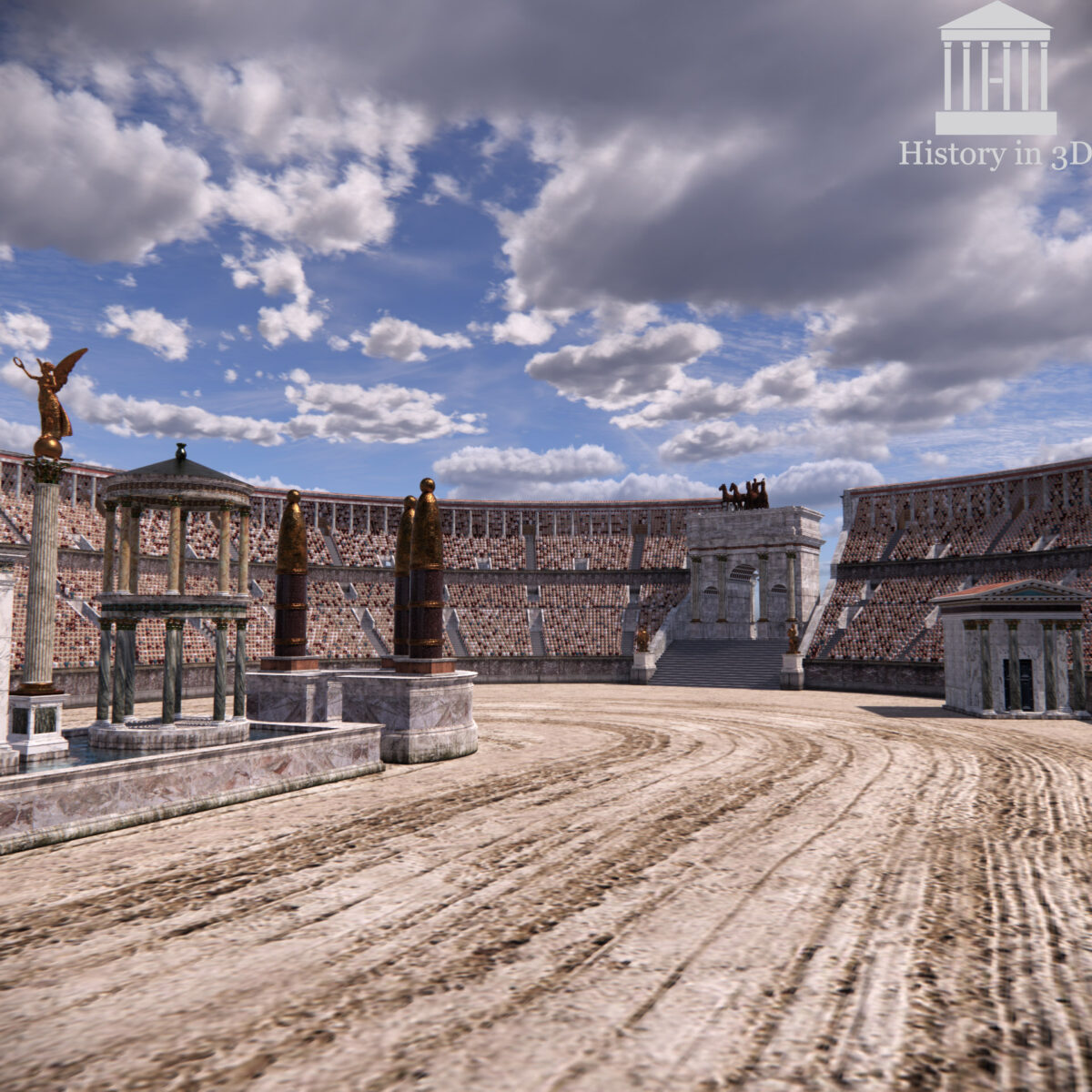
Along the southwest side the cavea is interrupted by the Temple of Sol and Luna, the old temple which was built into the structure of the Circus. It was approached in front by a flight of steps.
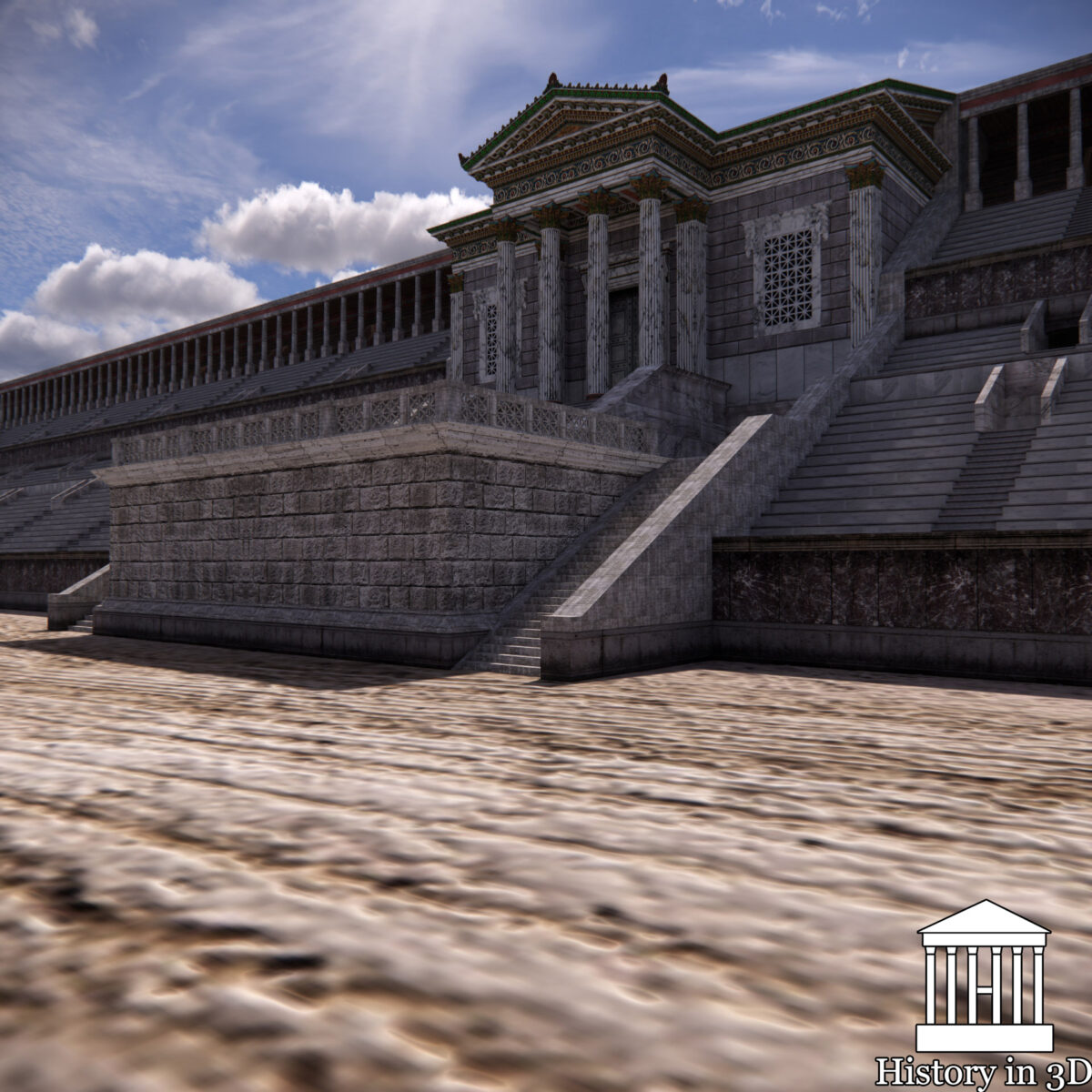
From the opposite side, there was the Pulvinar – the place from which the Emperor could watch the games. The Pulvinar was evidently a handsome building, and was specially mentioned by Augustus in his ‘Res Gestae’.Later it was probably rebuilt by Trajan, and we know the structure of the Pulvinar from the Forma Urbis Marble plan.
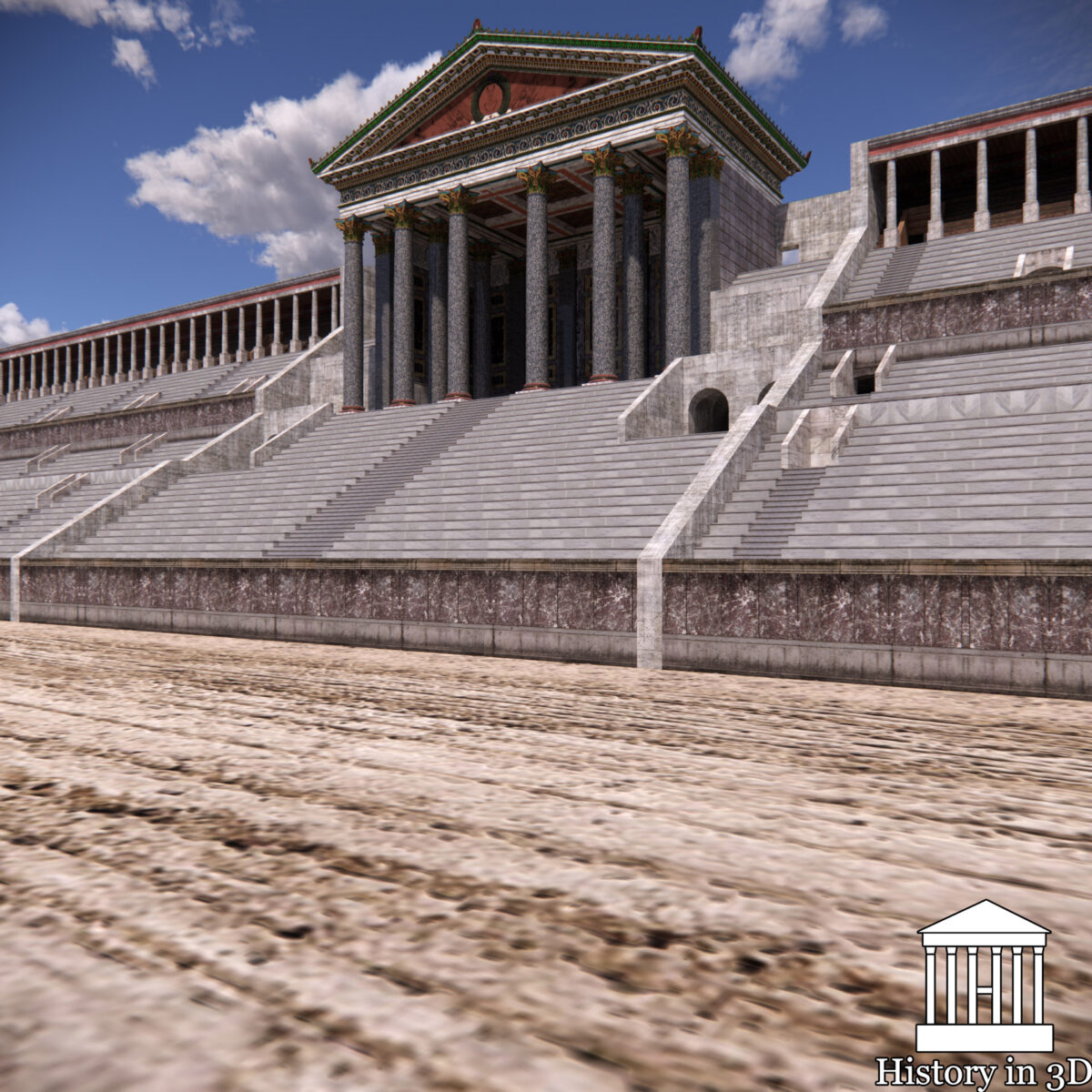
At the northwest end, the 12 entrance gates (carcerers) were disposed in a curve, and the central monumental entrance in the middle of them. The gates seem to have been of ornamental grillwork. From the balcony above the carcerers the presiding magistrate and his company watched the games.
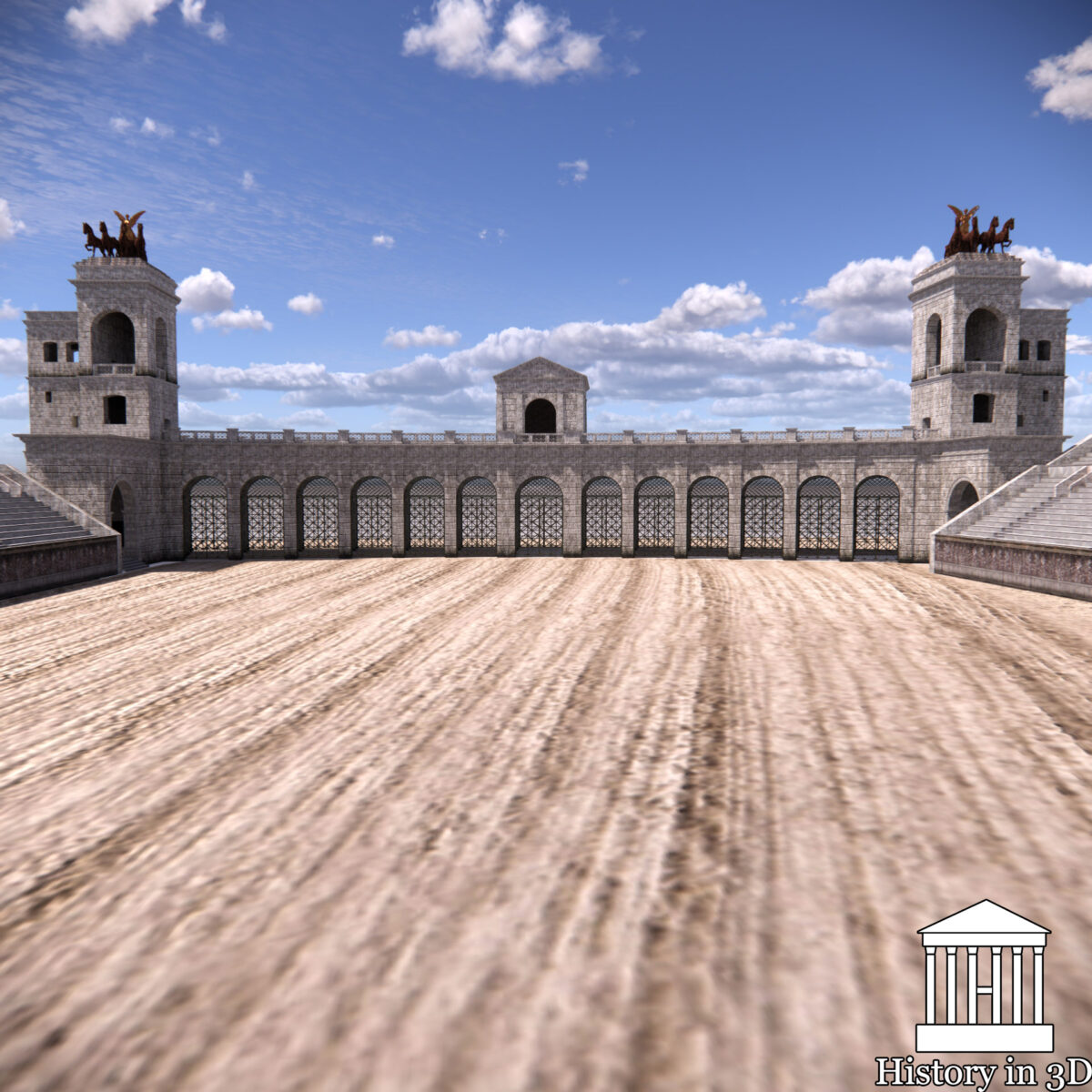
The spina in the IV century CE was an elaborate euripus raised above the level of arena, with basins faced with marbles and bridged at regular intervals. It was decorated with statues and pavilions. Also it contained numerous shrines and altars.
At either end of the spina, set off from it, was a high semicircular base carrying the metae, groups of three elongated cones tapering to a rounded end and decorated with bands.
From the eastern side of spina there were the ova, sets of seven large eggs by movement of which the number of laps run is believed to have been indicated to the spectators. They were possibly made of wood, later of gilded metal.
From the other edge, a set of seven dolphins were added to match the ova. They were set up by Agrippa. Possibly later they were piped and turned into a fountain playing into the euripus.
The first obelisk on the spina was set up by Augustus. It is the obelisk of Ramesses II brought from Heliopolis, now in Piazza del Popolo.
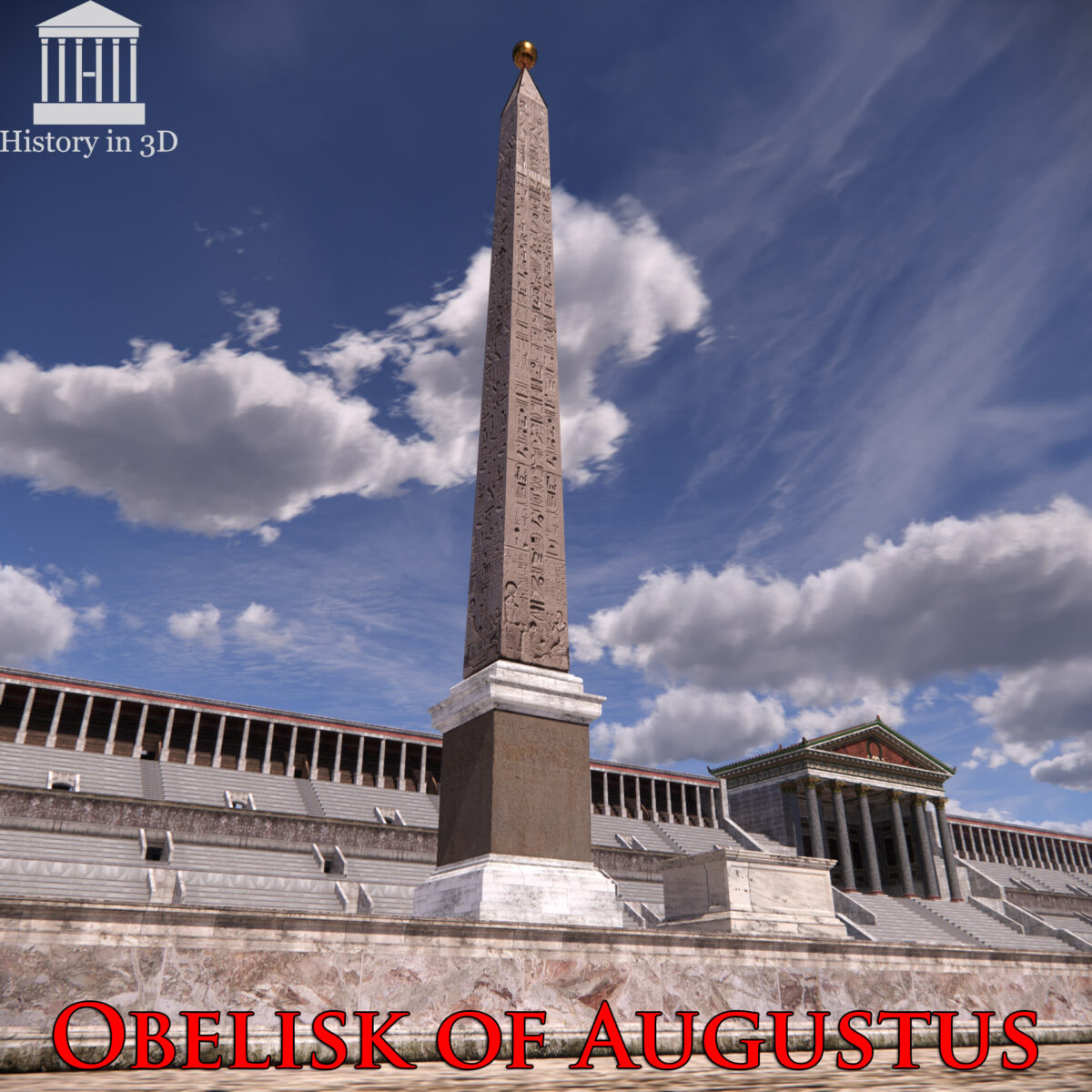
The second obelisk was erected by Constantius in 357 CE, it was the obelisk of Thutmose III from Karnak. Now it is known as Lateran obelisk in Piazza San Giovanni in Laterano.
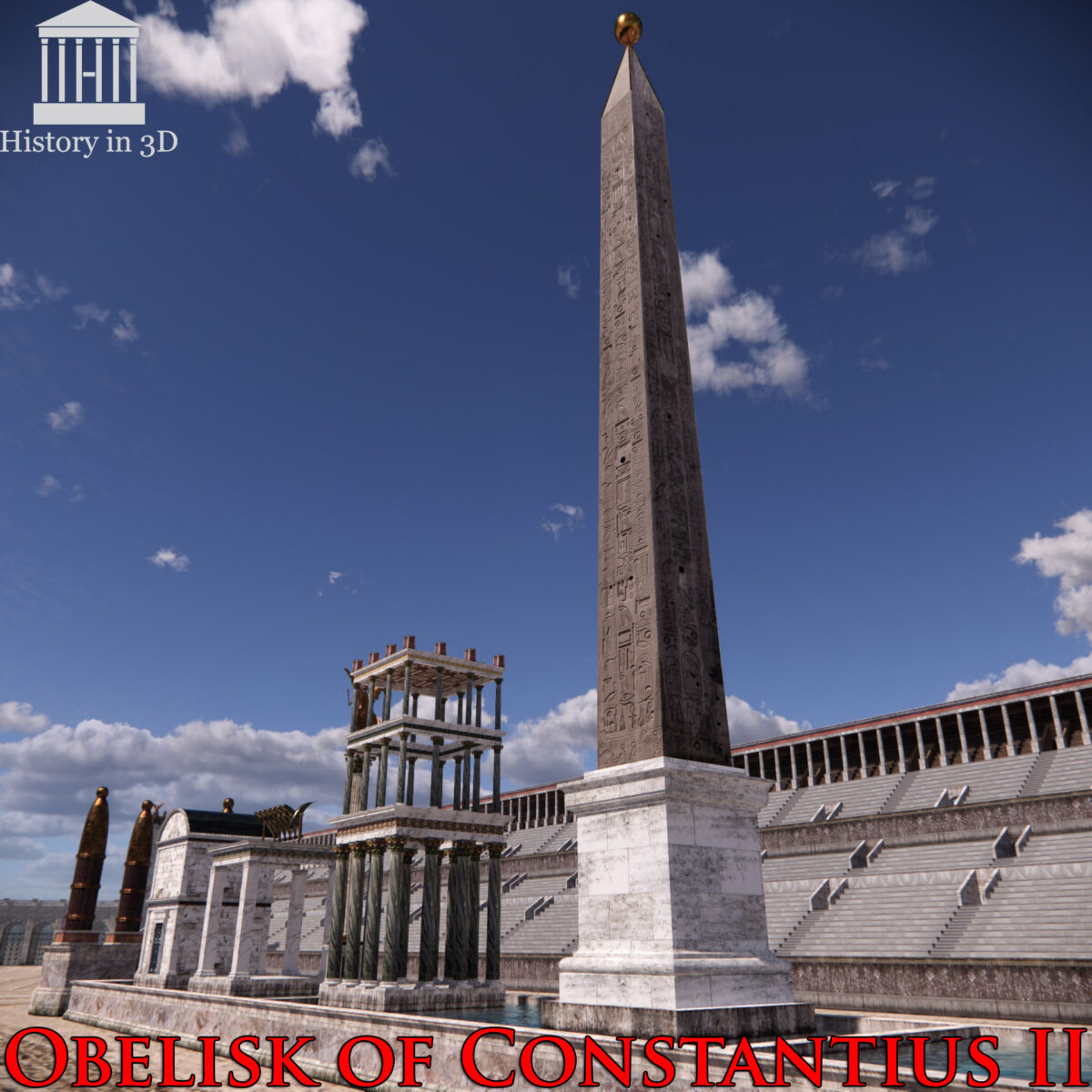
Almost all great roman emperors participated in restoring and improving the Circus. The Circus received its eventual form after the great restoration by Trajan. And for the last time it was magnificently restored by Constantine. After it there were the minor repairs only. The Circus functioned till the mid of the VI century CE, when the last known games were held there. Interesting, the whole population was already much less than the total capacity of the Circus, so we can just imagine how sad it looked like…

